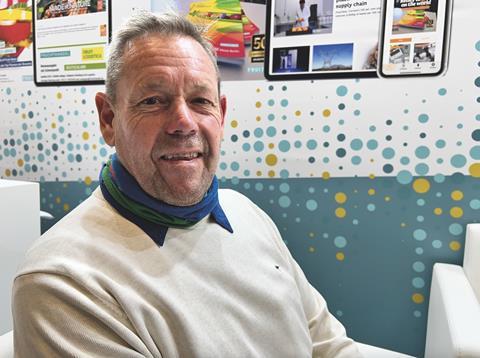Andre Vermaak speaks at this year’s Global Grape Congress about the rise of Namibia’s table grape business and the opportunities for future growth
Can you tell us a bit about the Namibian table grape business, and the benefits of production in the country?

Andre Vermaak: It’s a very remote area. In 1988, the first 20ha of Thompson Seedless were planted through a very well-known South African grower partnership, and it stayed like that for many years.
And then in 2000, the advantages of supply in November-December became really important as production in the Upington area (of South Africa), the Orange River area, started to increase dramatically. So in Namibia, people said “this could be similar for us”.
The advantage of production in Namibia was that it was two to three weeks before the Orange River. It has clear virgin soils with very good water supply.
The annual rainfall is 1-3mm and it’s usually in May in June, before pruning. And then, obviously, there is the demand and supply before the Christmas period in Europe and the UK, that was important. As we started implementing professional farming procedures and protocols, it’s grown from, let’s say, 100,000 cartons up to 9.6m cartons in 2023.
You mentioned a couple of export markets there. Where are the key export markets for Namibia?
AV: Europe is key and the UK is key. The Far East obviously is a market that needs to be developed, and some of the new varieties are giving Namibia opportunities to go to the Far East. But at the moment, you’re talking 95 per cent to Europe and the UK.
How is the Namibian table grape industry facing up to the really big challenges that we’re seeing across the business?
AV: It’s extremely sensitive at the moment. I think most people don’t understand the problems with fuel, electricity, labour costs, shipping costs – after Covid it was unreal, costs were three times more than before the pandemic – and it all comes back to the growers as expense.
The sad thing in my mind is that the price per kilo or for 500g of grapes is the same as what I received in 1984, and it’s now 2023. I do understand that the entire world is also in a tight spot – salaries after Covid and so on – and that consumers will prioritise potatoes and bread.
This is where the new varieties come in because of the lower labour costs and high yields. You need to maximise your profits, but it’s very sensitive. It’s a difficult, tough time, a really tough time.
The full interview will be broacast at the Global Grape Congress on 28 March



